Smoking Woods
Different woods give slightly different flavors to your product but very few people can tell one wood from another just from the aroma in the air unless they are comparing a very light wood like alder to a very strong wood like mesquite. Even fewer people can taste a product and identify the kind of wood used. Now.....I'm not saying any old wood is as good as another, I'm saying that there are subtle differences and the type of wood, the amount used, the quality of the smoke, the base flavor of the product combined with the flavor of the spices, marinades or basting sauce all work together to make a flavor footprint that you like. The best choices for smoking woods are hardwoods which have been properly cured. Don’t use green wood and use caution when trying citrus woods. Smoking woods come in several forms such as chips, chunks, pellets and of course logs. Chips and chunks are very popular for back yard cookers. Judge the flavor of the finished product and make small adjustments to suit your tastes. Learning the combination of seasoning, heat, time and smoke flavor that suits you is what makes barbecue, or grilling, or smoking so wonderful.
Smoking wood falls into three basic categories: Light, mild and strong. I’m staying away from descriptions like robust, distinct and aromatic. Those descriptions are reserved for distributors of wood products or fancy authors who just might be blowing a little smoke. You can figure out what you like and don’t like. You can also try mixing two kinds of woods for flavor. In general, you can't go wrong by selecting any wood in the mild category. My top three favorites are apple, pecan and cherry. Guava is new to me, I’m only on my third box.
Tip: Some woods will add extra color to your product. I start my salmon with alder and finish with cherry. Cherry is on the left and alder on the right.
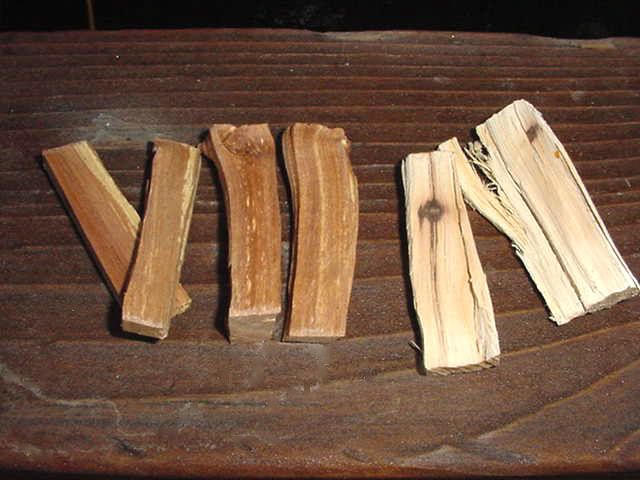
I don't know why but it comes out more colorful. Cherry adds some color to pork ribs too.
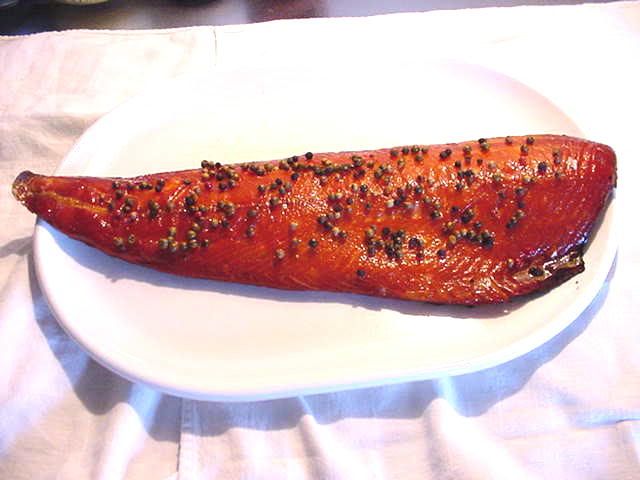
These are just some general guidelines for wood selection:
Alder ………………….. Light …………... Seafood
Apple ………………….. Mild ……………..Pork, Poultry, Beef, Seafood
Cherry …………………. Mild ……………. Pork, Poultry, Seafood
Guava …………………. Mild ……………. Pork, Poultry ???
Maple ………………….. Mild ……………. Pork, Poultry, Seafood
Peach ……..……………. Mild ……………. Pork, Poultry
Pecan …..………………. Mild ……………. Beef, Pork, Poultry
Hickory ………..…….. Strong ………..… Beef, Pork, Turkey
Mesquite …………….. Strong ………….. Beef
Oak ……………………. Strong ………..…. Beef
Other choices for smoke: Some folks like to add a few pieces of juniper to their alder wood when smoking salmon. An onion tossed on the coals is a very mild smoke and emits a wonderful smell out the vent stack. Corn cobs are used throught the South in backyard barbecue pits.
I like to buy wood in chunks and split it into smaller sticks, usually removing the bark in the process. I mix the sticks along with a couple of handfulls of chips into the lump charcoal so as it burns, new pieces of wood are consumed. This is a very easy way to mix woods too.
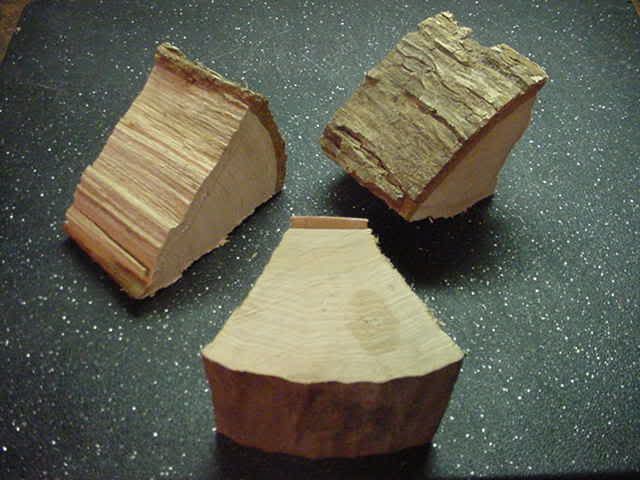
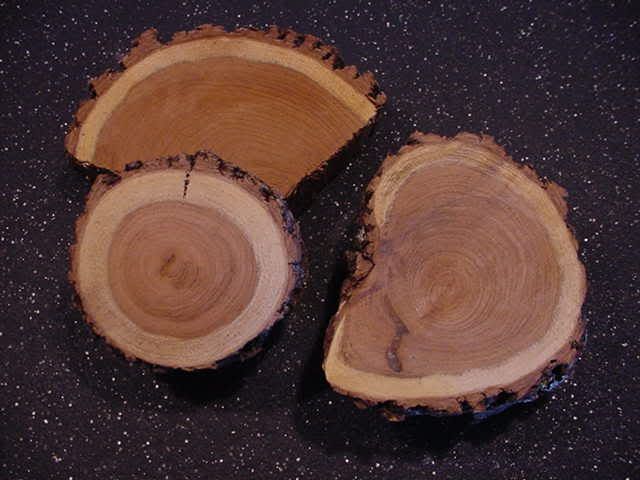
The picture below shows the typical amount of wood I'll use for a spare rib cook.
Smoke flavor is absorbed during early stages of your cook, this amount gives me just the amount of flavor I need on ribs.
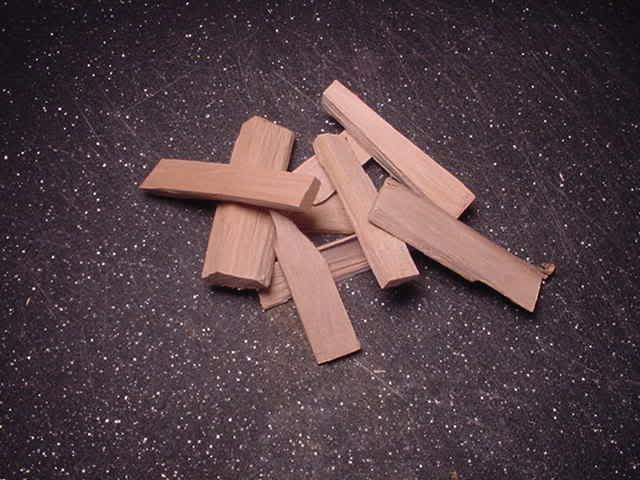
Keeping your wood at it's best is easier than you think. Flavor wood can deteriorate over time, and by this I'm referring to drying out. Your better quality wood suppliers will ship wood that is from 15% to around 25% moisture content, and with proper storage it will last quite a while. A cool, dry, dark place with air circulation, like a cardboard box with holes in it, or a burlap bag is ideal. The worst conditions for wood is when it's packaged and stored in a plastic bag.
If your wood chunks have faded in color, have noticeable splits it is most likely too dry and needs to be re-hydrated. If you have pieces with bark on them and the bark is crumbly, your wood is most likely too dry. .
You can rehydrate wood at any time, it will take from 30 minutes to several hours. Then you let it air dry on it's own (not in direct sunlight) and you will be good to go. I'm not talking about pre soaking wood when you are ready to cook, I'm talking about doing this as wood maintenance. You can use a shallow pan or do this outside with a sprayer on your hose. The best method is to purchase your wood once or twice a year from a good dealer, and store it properly. The best wood is heart wood (from the center of the log). The better companies will tell you the moisture ranges they shoot for.
